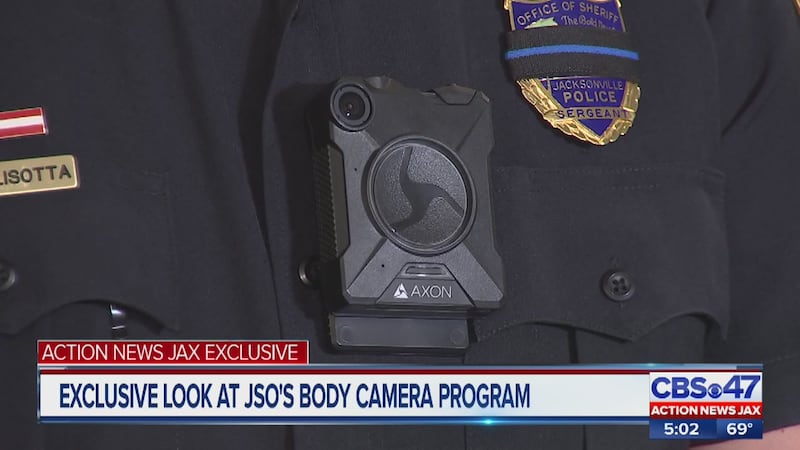So far, 15,000 videos have been recorded by officers with the Jacksonville Sheriff's Office who were wearing body cameras.
The program is still in its initial trial stages. Currently, 206 officers have hit the streets with the devices. More officers will be trained in the coming weeks.
Sgt. Robert Lisotta and Lt. Lilly Hotard oversee the body-worn camera unit at the Sheriff's Office. They spoke with Action News Jax during an exclusive in-person demonstration of the body cameras.
They said officers are getting used to working with the devices and the public will soon get used to them, too.
STORY: Recent Jacksonville officer-involved shootings raise questions about body cameras
“When they interact with police officers, they may hear what sounds like a vibration. They may even hear an audible tone. That’s simply a reminder to the officer that the device is in the recording mode,” said Lisotta.
Officers are required to turn their cameras on when they respond to a call for service, investigate an alleged crime or pull someone over.
“While they’re out in the community performing their daily duties, the camera should be in the on and standby position,” said Lisotta.
Once it’s activated, the camera will start with a 30-second buffer during which there’s no audio.
STORY: Body camera expert trains Jacksonville prosecutors on how to interpret footage
“The camera has a 143-degree field of view diagonally so that’s obviously much wider than the human eye sees,” said Lisotta.
The body cameras record in 720 HD quality.
Sgt. Lisotta said officers will be able to go back and review the video after they respond to a call.
“Any time you can take the stress level, once it’s been reduced, and review a video evidence of an incident to recall the facts and apply the accurate reporting, that’s a huge advantage,” said Lisotta.
By law, all the videos are being stored on the cloud and retained.
Lt. Hotard said the Sheriff's Office hasn’t run into any unforeseen challenges wit the cameras yet and said storage will likely be the biggest and costliest component of the program.
Coming up in minutes, we got an in-person look at JSO’s body cameras. We spoke to the officers in charge of the program about how the roll out is going and how the devices work. We’re live at 5 on CBS47 @ActionNewsJax pic.twitter.com/RIHShhLedJ
— Lorena Inclán (@LorenaANjax) December 18, 2018
She hopes the program will improve JSO’s relationship with the community.
“Through accountability and transparency. So, this is, basically, we are capturing the officer, how they’re interacting with the public itself,” said Hotard.
The Sheriff's Office said there’s one thing it wants the public to know as officers wearing the cameras continue to hit the streets.
“If that officer is wearing a body-worn camera, they can expect that it is recording,” said Lisotta. “They can always ask the officer if they have a camera and if it’s recording.”
Cox Media Group








